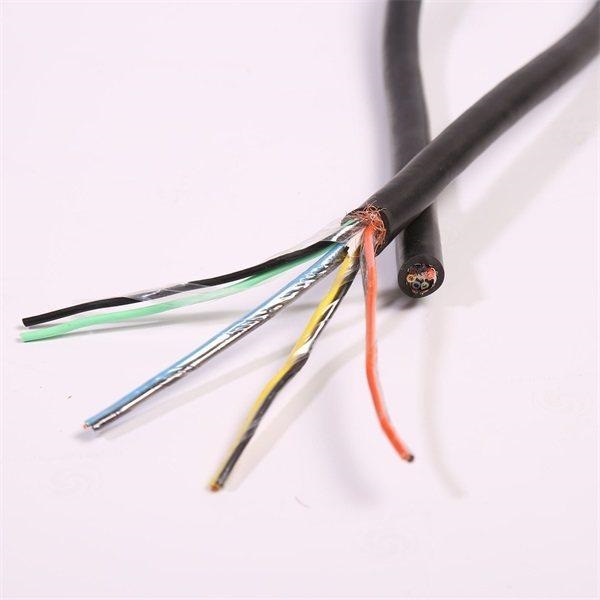Introduction:
Low voltage control cables are essential components in various electrical systems, providing the necessary power and signals for the operation of equipment and machinery. These cables play a crucial role in transmitting control signals and power to devices with low voltage requirements, ensuring efficient and reliable operation. In this article, we will explore the applications, types, and benefits of low voltage control cables, highlighting their importance in modern industrial and commercial settings.
Applications of Low Voltage Control Cables:
Low voltage control cables are widely used in a variety of applications across different industries. Some common applications include:

1. Industrial Automation: Low voltage control cables are essential for connecting control devices, such as sensors, actuators, and programmable logic controllers (PLCs), in industrial automation systems. These cables help transmit signals for monitoring and controlling various processes, ensuring smooth and efficient operation of machinery and equipment.
2. HVAC Systems: Heating, ventilation, and air conditioning (HVAC) systems rely on low voltage control cables to connect thermostats, dampers, and other control devices to the main control panel. These cables enable the transmission of signals for temperature regulation, air flow control, and energy efficiency in commercial and residential buildings.
3. Security and Access Control: Low voltage control cables are used in security and access control systems to connect sensors, alarms, and access control panels. These cables help transmit signals for detecting intrusions, controlling access to secured areas, and triggering alarms in case of emergencies.
4. Lighting Control: In commercial and residential buildings, low voltage control cables are used to connect lighting control systems, such as dimmers, timers, and occupancy sensors. These cables enable the precise control of lighting levels, energy consumption, and overall lighting ambiance.
5. Audio-Visual Systems: Low voltage control cables play a crucial role in audio-visual systems, connecting audio/video equipment, speakers, and control panels. These cables facilitate the transmission of audio and video signals for seamless integration and operation of multimedia systems.
Types of Low Voltage Control Cables:
Low voltage control cables come in various types and configurations to suit different applications and environments. Some common types of low voltage control cables include:
1. PVC Control Cables: PVC (polyvinyl chloride) control cables are versatile and cost-effective options for low voltage control applications. These cables are suitable for indoor use and offer good resistance to moisture, chemicals, and abrasion.
2. XLPE Control Cables: XLPE (cross-linked polyethylene) control cables are designed for outdoor and underground installations, offering enhanced durability and resistance to environmental factors. These cables are ideal for harsh environments where exposure to moisture, UV radiation, and temperature fluctuations is a concern.
3. Shielded Control Cables: Shielded control cables are equipped with metallic shields to protect against electromagnetic interference (EMI) and radio frequency interference (RFI). These cables are essential for applications where signal integrity and reliability are critical, such as industrial automation and control systems.
4. Multi-Conductor Control Cables: Multi-conductor control cables consist of multiple insulated conductors within a single cable jacket. These cables are used for connecting multiple control devices and signals in a single cable run, reducing installation time and complexity.
5. Instrumentation Cables: Instrumentation cables are specially designed for transmitting low voltage control signals in industrial settings, such as process control, instrumentation, and communication systems. Custom mineral insulated cables offer high signal integrity, noise immunity, and reliability in demanding industrial environments.
Benefits of Low Voltage Control Cables:
Low voltage control cables offer several benefits that make them essential components in modern electrical systems. Some key benefits of low voltage control cables include:
1. Reliable Signal Transmission: Low voltage control cables provide reliable transmission of control signals, ensuring accurate and consistent communication between control devices and equipment. This reliability is crucial for the proper operation of machinery and systems in industrial, commercial, and residential settings.
2. Flexibility and Versatility: Low voltage control cables come in various configurations, sizes, and materials to suit different applications and environments. This flexibility allows for easy installation, routing, and customization according to specific requirements, making these cables highly versatile in diverse settings.
3. Durability and Longevity: Low voltage control cables are designed to withstand harsh environmental conditions, mechanical stress, and temperature fluctuations. These cables offer high durability and longevity, reducing the need for frequent maintenance and replacement, thus ensuring long-term performance and cost-effectiveness.
4. Safety and Compliance: Low voltage control cables are manufactured in compliance with industry standards and regulations to ensure safety and reliability. These cables undergo rigorous testing for insulation resistance, voltage rating, and flame retardancy to meet the highest quality and safety standards, providing peace of mind to users and installers.
5. Cost-Effectiveness: Low voltage control cables are cost-effective solutions for transmitting control signals and power in electrical systems. These cables offer a balance between performance, reliability, and affordability, making them an economical choice for various applications in industrial, commercial, and residential settings.
Conclusion:
Low voltage control cables are integral components in electrical systems, providing the necessary power and signals for the operation of equipment and machinery. These cables offer a wide range of applications, types, and benefits that make them essential in modern industrial and commercial settings. Understanding the importance of low voltage control cables and choosing the right type for specific applications is crucial for ensuring reliable and efficient operation of electrical systems. By exploring the applications, types, and benefits of low voltage control cables, users can make informed decisions and enhance the performance and reliability of their electrical installations.
